Family Homelessness INNformation Series: Three differences between adult single and family homelessness
This week we are exploring what makes family homelessness a unique sub-set of homelessness. We will be highlighting the differences and unique aspects of both to provide an understanding of the challenges and opportunities to serve children and families experiencing homelessness better. As mentioned in our previous blog post, we want to educate and engage you, our community, on what is necessary to create a community where no child or family is homeless. For the next 6 weeks we will be releasing weekly episodes each of which will include conversations with experts in homelessness, staff at the frontlines as well as those with lived experience as they discuss important aspects of child and family homelessness.
The episodes are:
Episode 1: Differences between Family & Adult Single Homelessness;
Episode 2: Data and Research;
Episode 3: Trauma-Informed Care;
Episode 4: Economic Barriers and Solutions;
Episode 5: Social Inclusion and the Case for Adequate;
Episode 6: Affordable Family Housing.
Listen to Episode 1: Differences between Family & Adult Single Homelessness HERE. In this episode Kara Layher our Communications Specialist interviews Abe Brown, our Executive Director. Abe discusses with Kara three key differences between family homelessness and singles homelessness along with some of the differentiating factors.
The three key differences are:
Length of shelter stay as a measurement of success
Hidden Homelessness
According to the State of Homelessness in Canada 2014, for every four people sleeping in an Emergency Shelter there is one person provisionally accommodated (staying with friends, in a hotel, in prison or in hospital). These individuals are often referred to as the ‘hidden homeless’; individuals who access accommodation but have no immediate prospect of permanent or stable housing or utilizing emergency shelter. In 2014, 8% of Canadians said that they had been in that situation at least once—and of these, one in five experienced it for at least one year.[1]
There is much speculation around why an individual may choose to stay ‘hidden’ rather than seeking out help. The reason most inferred is that many people don’t know what assistance is available if they do reach out for help and some, specifically parents and families, do not want to put the stress of ‘homelessness’ on themselves or their children. In some cases where it is a single mother with children, remaining in an unhealthy relationship or potentially dangerous situation is considered a better to being homeless with their children. It is largely speculated that women are much more likely to be among the hidden homeless population due to many reasons including concern for their safety and lack of stability for their children.[2]
In 2017, nearly 50% of families who accessed our Emergency Family Shelter were staying with family or friends prior to arriving at our doors. As well, 57% of the families in our Emergency Family Shelter were single-headed female families.[3]
Hidden homelessness is important, especially in families, because this is an area where preventative measures such as rental assistance and support with utilities can have a high impact by diverting families before they fall into homelessness.
Homelessness is a result of systemic failures. If we as a society can ensure we have the proper community supports available to those who need it, we can prevent homelessness from occurring in the first place. Knowing how many families are experiencing ‘hidden homelessness’ helps with planning for appropriate supports and providing better awareness and access to those who need it. Families without stable, permanent and appropriate housing put large amounts of stress on both parents and children. Housing provides the stability children crave for healthy brain development while lowering an individual’s susceptibility to mental illness.[4]
Complexity in families
A term of reference used for case management within the system of care is ‘acuity’. Acuity refers to systemic issues such as poverty, risk factors, mental health, substance abuse, domestic/ interpersonal violence, medical concerns, age, life skills, employment history/potential, education and social supports.[5] Level of acuity assists in evaluating the level of case management an individual or family will receive.
Within the homeless-serving sector in Calgary, acuity and chronicity (long term shelter stay and homelessness experience) and acuity are the primary focus for assessment and evaluation of housing and support needs. Due to the large number of individuals who are considered chronically homeless in the city, efforts and funding have been focused on ending ‘chronic homelessness’. Of the approximately 200+ families counted as homeless in Calgary, a small subset are considered chronically homeless.[6]
Rather than acuity and chronicity (chronicity will be discussed in greater detail in point 3), families need to be assessed through the complexity of the issues surrounding each individual within the family unit as the presence of children impacts the family’s housing and support needs. When family members have complex needs, supports are needed and can be difficult to secure to help stability them long-term. The presence of children raises the family’s complexity and vulnerability and requires more targeted and age specific interventions, often over longer periods of time. Children experience toxic stress and trauma when homeless or living in poverty. These issues require early intervention to ensure early childhood and age-appropriate brain, physical and emotional development that will lead to success in schooling, and to mitigate against homelessness becoming a recurring theme in their lives as adults.
As well, families are at a large economic disadvantage due to the number of people all utilizing the same resources or financial supports. This makes it difficult for families to acquire affordable and appropriate housing. Although there is a shortage of affordable housing for singles experiencing homelessness, the cost comparison of a studio or one bedroom apartment as opposed to a two or three bedroom apartment is vastly different. At intake in our Emergency Family Shelter, 33% stated that they simply could not afford to pay the rent. In fact, it is estimated that in Calgary, there are over 15,000 households who earn less than $20,000 per year and are paying more than 50% of their income on rent every month.[7]
In addition, at the Inn, and within Family Homelessness, many families are Indigenous (60% of families accessing the Inn in 2017). The systemic issues impacting Indigenous Peoples come into play to add more complexity to their experiences as well. The same is true for immigrant families (18% of families accessing the Inn in 2017). Immigrant families have unique resettlement needs, linguistic and legal barriers and face discrimination in the housing and labour markets as do Indigenous families.[8] These families face higher barriers to housing and stability making each case complex and unique from one another.
Length of shelter stay as a measurement of success
As stated in point 2, another term of reference in the system of care is ‘chronicity’. Chronicity refers to the individual’s length of stay in homelessness, including stays at shelter, sleeping rough or institutional stays (hospital, detox/treatment, remand/corrections).[9]
Length of stay tends to differ between adult single shelter users and families. Due to the complexity we see in families and the economic disadvantage families have trying to find affordable and appropriately sized housing, length of stay in shelter can be prolonged.
To explain, the majority of emergency shelter users (83.7%) at Calgary Drop-In & Rehab Centre are transitional users for whom the average length of stay is just over one week.[10] Whereas, in 2017, the average length of stay for families in our Emergency Family Shelter was 37 days, a slight increase from an average of 35 days in 2016. So far this year, we are continuing to see an increase in the length of stay for families in shelter.
While we always want to see the fastest possible transition from shelter into a home, this is not the primary measurement of success. Families cannot move into ‘any home’ without matching their specific needs. When children are involved it is important that families are well matched in supportive housing so children have a safe and stable environment in which to grow and thrive.
In addition, supports need to be reflective of the unique needs of each family member and include culturally specific supports, access to child care, education, job training and employment.
There are many factors that make a home and community suitable for a family, especially a family transitioning out of homelessness. These factors include:
- Affordability (less than or equal to 30% of income)
- size (3 br),
- green space,
- ground level/townhouse,
- access to transit,
- school,
- access to child care,
- community centre,
- other community resources,
- grocery stores,
- individualized case management.
This essential list of needs plus a growing waitlist for housing suitable for large families creates a systemic issue that impacts length of stay in a family shelter. Whereas both adult singles and families thrive better in communities with access to amenities and resources, size and affordability of housing along with proximity to schools, child care, and playgrounds or green space are vital when housing formerly homeless families.
A single agency cannot address all the systemic issues needed to ensure families are housed quickly and appropriately from shelter. Diversion, prevention and emergency shelter are essential components of any action plan to end child and family homelessness. Working collaboratively, in concert with governments, large public systems, corporate Calgary, the philanthropic community and the family-serving sector is vital if we are to ensure children and families have access to the right resources, right housing and right supports to end homelessness in their lives.
——
There is so much more to discuss in our Family Homelessness INNformation Series. Be sure to watch Episode 1 of our series available HERE.
Please send us your thoughts and questions, and share this within your networks to join in on the conversation.
Next week we are discussing the role of data and research in addressing family homelessness. We will be talking with Kevin McNichol, VP of Strategy at Calgary Homeless Foundation, Dr. Katrina Milaney from the University of Calgary and Abe Brown our Executive Director.
More information available at:
http://calgaryhomeless.com/content/uploads/YYC_PiT_Report_2016_10.pdf
http://calgaryhomeless.com/content/uploads/DI-data-report-0214.pdf
http://homelesshub.ca/resource/state-homelessness-canada-2014
http://homelesshub.ca/about-homelessness/population-specific/families-children
http://homelesshub.ca/toolkit/subchapter/what-pit-count
http://calgaryhomeless.com/content/uploads/10-Year-Plan-Update.pdf
http://calgaryhomeless.com/content/uploads/SSPF_V116_2017-03-15.pdf
http://homelesshub.ca/about-homelessness/topics/mental-health
http://www.statcan.gc.ca/pub/75-006-x/2016001/article/14678-eng.htm
http://calgaryhomeless.com/blog/housing-is-health/#_ftn2
http://calgaryhomeless.com/content/uploads/DI-data-report-0214.pdf
http://homelesshub.ca/about-homelessness/population-specific/hidden-homelessness
[1] Statistics Canada. (2016). Hidden Homelessness. Retrieved from: http://www.statcan.gc.ca/pub/75-006-x/2016001/article/14678-eng.htm
[2] Milaney, K., Ramage, K., Yang Fang, X., Louis, M. (2017). Understanding Mothers Experiencing Homelessness: A Gendered Approach to Finding Solutions to Family Homelessness. Toronto: Canadian Observatory on Homelessness Press.
[3] Just over half of this number indicated they are fleeing domestic violence situations.
[4] Homeless Hub. (n.d.) Mental Health, [online]. Retrieved from: http://homelesshub.ca/about-homelessness/topics/mental-health.
[5] Calgary Homeless Foundation. (2017). System Planning Frameworks. Retrieved from: http://calgaryhomeless.com/content/uploads/SSPF_V116_2017-03-15.pdf
[6] Action Panel to Address Family Homelessness in the City of Calgary: Recommendation for Action. Prepared for the Calgary Honmeless Foundation by Dr. Raymond Downie p.7
[7] I Heart Home. (2015). Calgary’s Updated Plan to End Homelessness: People First in Housing First
[8] Ibid. p.24
[9] Calgary Homeless Foundation. (2017). System Planning Frameworks. Retrieved from: http://calgaryhomeless.com/content/uploads/SSPF_V116_2017-03-15.pdf
[10] Calgary Homeless Foundation. (n.d.) Patterns of Emergency Shelter Stays in Calgary. Retrieved from: http://calgaryhomeless.com/content/uploads/DI-data-report-0214.pdf.



















